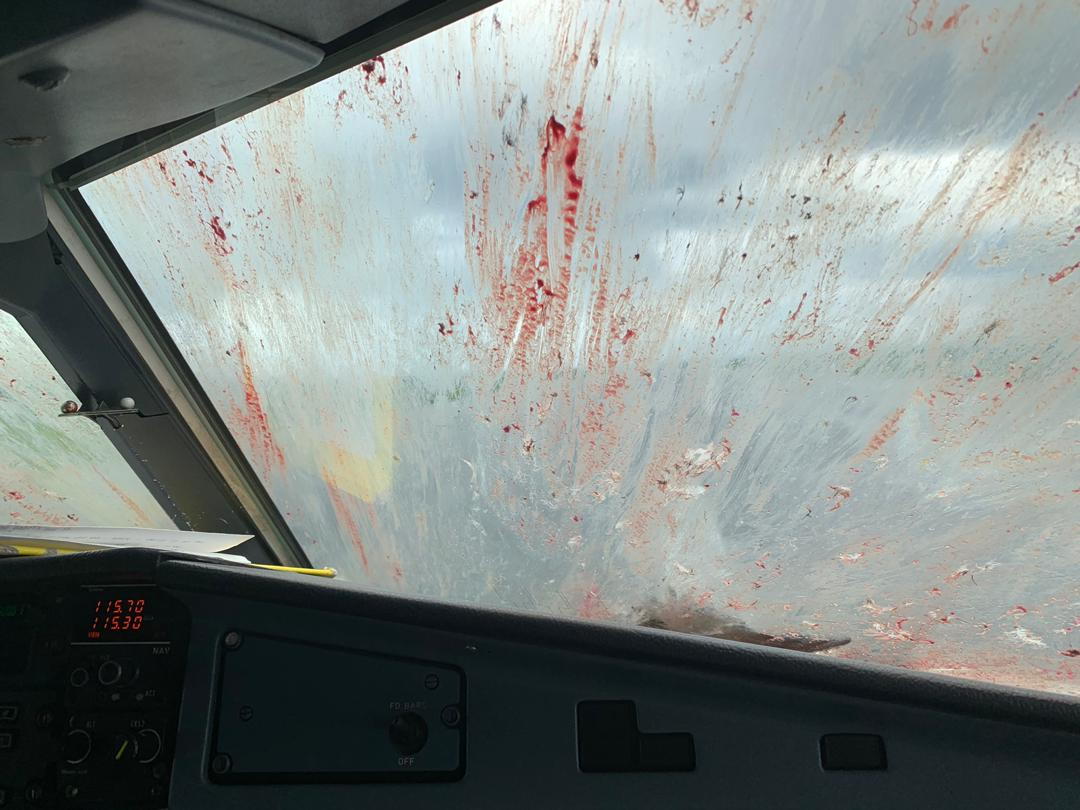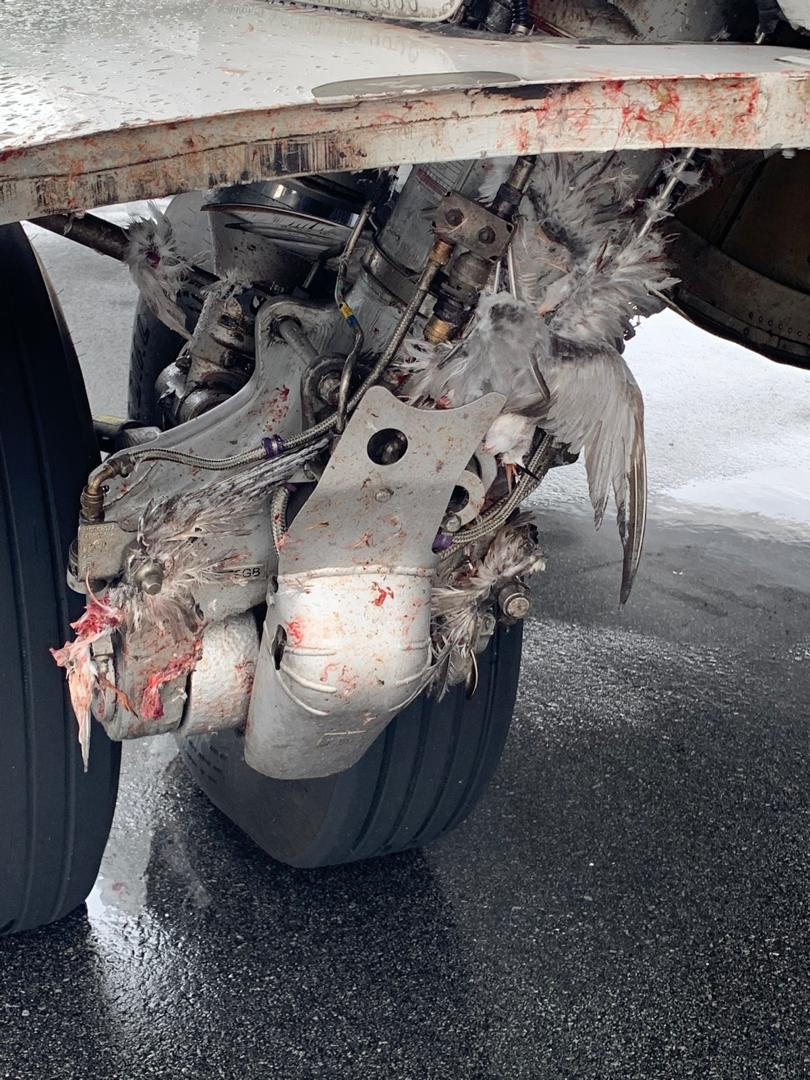Massive birdstrike on PrecisionAir ATR72
Thread Starter
Massive birdstrike on PrecisionAir ATR72
Last edited by Senior Pilot; 11th Dec 2018 at 02:25. Reason: Add images
Join Date: Jan 2005
Location: UK
Posts: 138
Likes: 0
Received 0 Likes
on
0 Posts
perhaps these... https://en.wikipedia.org/wiki/Quelea
Join Date: Aug 2013
Location: Not lost, but slightly uncertain of position.
Posts: 14
Likes: 0
Received 0 Likes
on
0 Posts
Wow, they will need one or two of these to make it look shiny again:
https://www.turtlewax.com/our-produc...ug-tar-remover
https://www.turtlewax.com/our-produc...ug-tar-remover
Thread Starter
perhaps these... https://en.wikipedia.org/wiki/Quelea
Q. quelea is a major pest to small-grain cereal crops
Robust aircraft
Join Date: Jun 2014
Location: USA
Posts: 98
Likes: 0
Received 0 Likes
on
0 Posts
Would a large modern passenger aircraft have that same susceptibility to a flock of smaller birds such as those starlings?
(By the photos, the thread ATR72 seemed messy but not particularly damaged. But what about engines w/ ducted fans versus large propellers...and ingestion further back into compressor and combustion stages?)
(By the photos, the thread ATR72 seemed messy but not particularly damaged. But what about engines w/ ducted fans versus large propellers...and ingestion further back into compressor and combustion stages?)
Last edited by dogsridewith; 11th Dec 2018 at 01:18.
Join Date: Jan 2006
Location: US
Posts: 2,205
Likes: 0
Received 0 Likes
on
0 Posts
With little critters like these it's engines you need worry about. October 4, 1960: Eastern Air Lines Flight 375 crashed on takeoff from Logan International Airport, killing 62 of 72 on board. The crash was eventually determined to be the result of bird (starlings) ingestion into three of the four engines. The bird damage caused the No. 1 propeller to autofeather and the engine to shut down at the same time that damage to the No. 2 and No. 4 engines prevented those engines from developing full power at a critical stage of flight. The aircraft was unable to climb and the power interruption to the port engines probably caused the left wing to stall; the wing dropped and the aircraft crashed into the water. There was also evidence that birds had crashed into the windscreen, reducing the pilots' visibility; in addition, bird remains had clogged the pitot tubes, making the pilots' airspeed indicators unreliable.
Wings don't stall because engines fail
Two photographs were taken of the aircraft one second apart, the first indicated an IAS of 118 knots, the second 103 knots, so de-accelerating at a rate of 15 knots/sec. Stall speed at the particular configuration/weight was 108 knots, the extreme yaw compounded the ability of the left wing to develop lift due to blanketing.
With little critters like these it's engines you need worry about. October 4, 1960: Eastern Air Lines Flight 375 crashed on takeoff from Logan International Airport, killing 62 of 72 on board. The crash was eventually determined to be the result of bird (starlings) ingestion into three of the four engines. The bird damage caused the No. 1 propeller to autofeather .....
Join Date: Jul 2007
Location: Auckland, NZ
Age: 79
Posts: 722
Likes: 0
Received 0 Likes
on
0 Posts
But the key to the Electra accident lay (in the words of the CAB) "in the unique and critical sequence of a rapidly occurring chain of events", as alluded to above.
Join Date: Feb 2009
Location: Seattle
Posts: 379
Likes: 0
Received 0 Likes
on
0 Posts
What a mess! One of my areas of interest is common events that impact more than one sensor such that it is difficult to determine which one (or ones) is providing incorrect data. I hope we learn what the impact was on airspeed and AOA measurements. It clearly took some savvy flying to bring this one home. Well done to the crew and all who may have provided assistance.
Hats off to PW and the nacelle designers
Looks like an inertial separator did the job.

Looks like an inertial separator did the job.
At the moment, we don't have any evidence of any in this instance.






